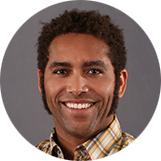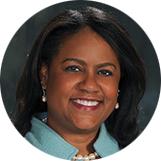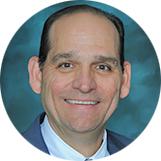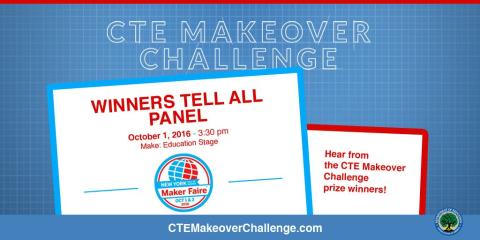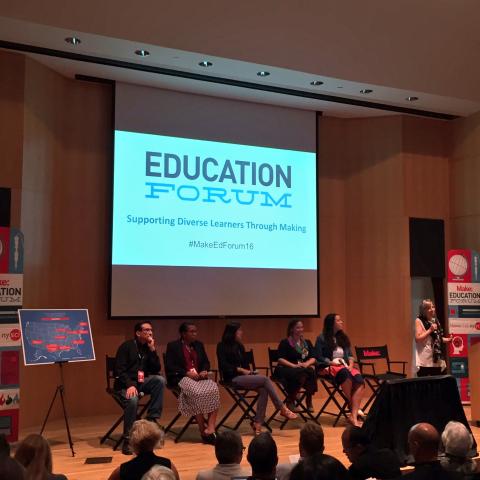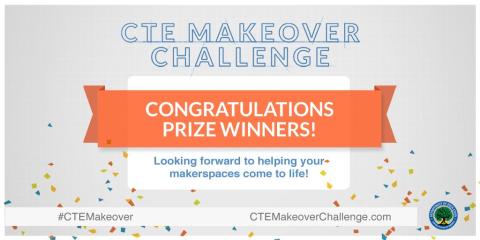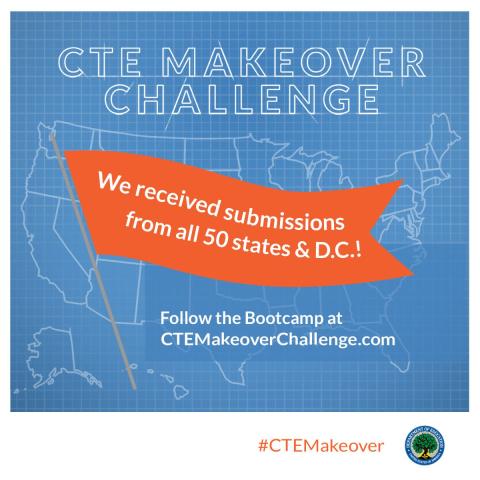About the Challenge
The U.S. Department of Education (ED) invited schools to enter the CTE Makeover Challenge by submitting a design for a CTE makerspace.
A makerspace is an environment or facility that provides resources, materials, and equipment for students to conceive, create, and collaborate through making. Making refers to a hands-on learning approach that encourages students to imagine, create, and tinker through the process of manufacturing, testing, and demonstrating their ideas. Through making, educators enable students to immerse themselves in problem-solving and the continuous refinement of their projects while learning essential 21st-century career skills, such as critical thinking, planning, and communication. ED sought models of CTE makerspaces across a wide range of facility types, such as classrooms, libraries, and mobile spaces, that it could share with educators to encourage the creation of affordable, scalable, and replicable makerspaces.
All eligible schools were invited to participate in the CTE Makeover Bootcamp, a 6-week program that provided resources and expertise in makerspace design and planning. $200,000 in cash and other prizes were distributed to 10 prize winners to turn their vision for a makerspace into a reality. Prize winners submitted a video tour of their constructed makerspaces and compiled an online portfolio of materials for use in the CTE Makerspace Showcase at the World Maker Faire in New York City in October 2016.
See the full Challenge Rules, Terms, and Conditions here (PDF).
At a Glance
Awards
$200,000
10 finalists received $20,000 and a share of donated in-kind prizes valued at $375,000
Schedule
Mar - Apr 2016: Open Submissions
Apr - May 2016: Bootcamp (open)
Jun 2016: Winner Announcement
Jun - Sep 2016: Makerspace Build out
Oct 2016: Winner Showcase at World Maker Faire
Submission
A CTE makerspace blueprint with designs and plans to turn the school’s vision for a makerspace into a reality.
See full Submission Form here (PDF).
OCTAE Contact
On June 17, the 10 CTE Makeover Challenge prize winners were announced at the White House Champions of Change for Making event. Each winning school received $20,000 and a share of in-kind prizes donated by sponsors and valued at $375,000.
From mobile makerlabs to autoshop libraries to entrepreneurship hubs, these 10 makerspaces serve as exceptional models for all schools working on developing their own making programs. Take a look at these exemplary makerspaces from schools across the nation below:
Burlington, VT
Built from the ground up in a space that is currently empty, Studio B (Burlington) encourages students to work in an interdisciplinary fashion with all CTE programs. Welders working with artists, 3D modelers working with the aviation students, and Early Childhood Ed students working with programming and robotics students create opportunities for students to learn across disciplines. The program’s core elements are a part of every student’s personalized learning plan. This new facility and its instructors, students, and members are catalysts in renovating Burlington Technical Center’s adult education program.
Learn more about Burlington Technical Center’s makerspace:
Washington, D.C.
Capital City Public Charter School’s makerspace is the centralized hub of experiential learning, innovation, and 21st century skill building in the school. It is a joyous, inspiring space, allowing their 659 students in 5th-12th grade to create physical or digital objects that bring concepts to life. The makerspace will set Capital City apart as a place not only to learn, but also as a place for students to gain independence, creativity, and STEAM skills.
Learn more about Capital City Public Charter School’s makerspace:
Chicago, IL
The Carl Schurz High School makerspace will be an inviting and open space where students can play, express, and cultivate their curiosity in the DIY culture.
Learn more about Carl Schurz High School’s makerspace:
Piedmont, MO
Clearwater High School’s CTE Makeover Challenge makerspace project, “Transforming Library Space for School and Community Engagement,” presents a flexible, mobile makerspace as the means for collaborative work between the school and community. Students and community members will work together, sharing knowledge, resources, and career networking. Students will be motivated with access to a wide variety of lab stations, allowing application of academic skills and development of creativity and innovation, while engaging in purposeful projects that solve “real world challenges” within the community. The makerspace will serve as a launchpad into high tech careers, introducing students to robotics, computers, engineering/electrical design, video/audio editing/production, graphic arts, and other creative processes.
Learn more about Clearwater High School’s makerspace:
Sterling, VA
The Dominion High School makerspace is an updated CTE classroom paired with a set of mobile maker carts. Students in the makerspace will have access to the latest in digital fabrication machines and electronics in order to create public products for the world that solve authentic challenging problems. The maker carts will be spread out around the school providing access to maker tools in every classroom.
Learn more about Dominion High School’s makerspace:
Austin, TX
Reagan Early College High School’s makerspace is a place where creative freedom meets engineering technology. There are two connected spaces: (1) a computer lab where students can explore 3D modeling and computer programming and (2) an adjacent workspace where students can 3D print their creations, machine their ideas out of wood, or assemble electrical circuits and mechanical systems. It is a place where students feel welcome and part of a community of innovators and continuous learners.
Learn more about John H. Reagan Early College High School’s makerspace:
Pacific Palisades, CA
The Pali STEAM Shop is a makerspace with a mission of social justice: to provide equitable access to the tools of innovation. Our vision has been to open a classroom that pays homage to traditional shop class, aggressively embraces innovation, and ensures that underrepresented students are active and engaged leaders in the program.
Learn more about Palisades Charter High School’s makerspace:
San Antonio, TX
The Roosevelt High School CTE Makerspace is unique because it’s not a fixed physical space, but rather a design for mobile makerlabs that can be moved about the school and community as needed. The mobile makerlabs help solve space limitations and student logistical issues faced by many schools. Each of the five mobile makerlabs has a unique theme and provides novel exploratory and project-based maker experiences. The Roosevelt High School mobile makerlabs provide opportunities for genetics exploration, wearable programming, fabrication in different content areas, and many other hands-on learning challenges.
Learn more about Theodore Roosevelt High School’s makerspace:
Lagrange, GA
The THINC College & Career Academy Makerspace is a collaborative area that allows our Engineering and Entrepreneurship students to work together in order to design, create, and develop marketing, promotional materials, and packaging for their products. Students are responsible for the maintenance and daily operations of the makerspace, and are supervised by the Entrepreneurship and Engineering instructor, along with guests from the local technical college and industry experts.
Learn more about THINC College & Career Academy’s makerspace:
Austin, TX
The Travis Early College High School makerspace will debut in the fall of 2016 and is a space for the entire Austin community. Students, parents, and community members will utilize the area for collaboration and as a space to create solutions for local and global problems. The space is physically located between the school’s new commercial photography studio and new engineering shop, so it will be used heavily by those two STEAM programs as well.
Learn more about William B. Travis Early College High School’s makerspace:

